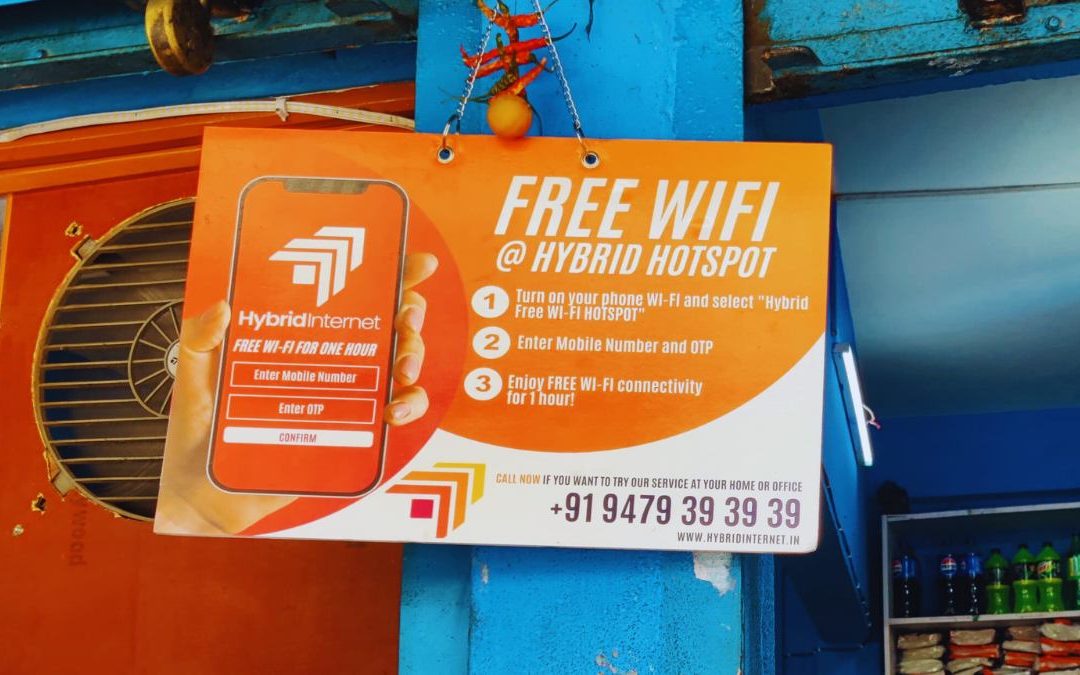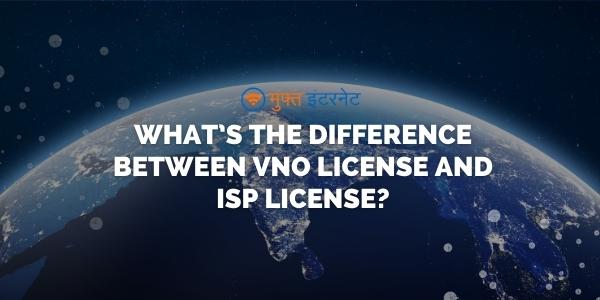
by Jinesh Parekh | Dec 9, 2022 | How to Become an ISP |
10 Steps To Start Your Own ISP Business In India
Do you want to start an ISP in India? Are you looking for a step-by-step guide on how to start your own ISP business in India? Well, you are at the right place!
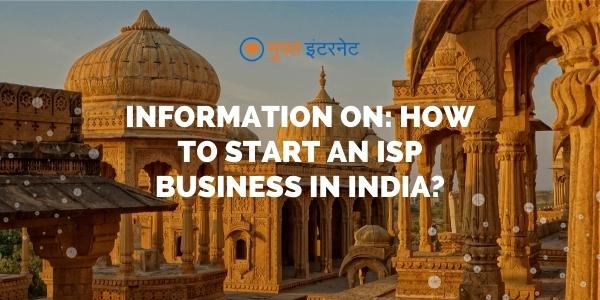
Introduction: Steps to Start Your Own ISP Business in India
There are a number of steps you need to take in order to start your own ISP business in India. Below we outline the key steps you need to take:
1. Register your business: In order to start an ISP business in India, you first need to register your company with the Registrar of Companies (ROC). This can be done online through the Ministry of Corporate Affairs website.
2. Obtain a license: Once your company is registered, you then need to obtain an Internet Service Provider License from the Department of Telecommunications (DoT). This process can take up to six months.
3. Set up infrastructure: You will need to set up the necessary infrastructure for your ISP franchise in India, which includes obtaining internet bandwidth, setting up servers and routers, and establishing connectivity with other ISPs.
4. Launch your service: Once everything is set up, you can launch your ISP service! Make sure to promote your business and attract customers.
1. Find Funding
If you are planning to start your own Internet Service Provider (ISP) business in India, one of the first things you need to do is find funding. Here are some tips on how to find funding for your ISP business:
1. Look for investors who are interested in the telecommunications industry. There are many venture capitalists and private equity firms that invest in the telecommunications sector. You can try approaching them for funding.
2. Another option is to take out a loan from a bank. Many banks offer loans specifically for businesses in the telecommunications industry.
3. You can also look for government grants or subsidies that are available for starting an ISP business in India. The Indian government provides various subsidies and incentives for businesses that promote broadband penetration in the country.
4. Finally, you can also consider self-funding your ISP business by investing your own personal savings or taking out a personal loan. This option may be riskier but it can also be more rewarding if your business is successful.
2. Find a Location
Assuming that you have made up your mind to start your own internet franchise in India, the first step would be to find a location for setting up your office. This is important because your office should be situated in an area where there is a good demand for internet connectivity. Once you have zeroed in on a suitable location, the next step would be to obtain all the necessary licenses and permits from the local authorities. Only after these formalities have been completed, can you go ahead with setting up your office and starting operations.
3. Register the Company
In order to start your own ISP business in India, you will need to register the company with the Registrar of Companies (ROC). This can be done online or offline. The process is relatively simple and straightforward, and once the company is registered, you will be able to obtain a Certificate of Incorporation.
Once the company is registered, you will need to obtain a license from the Telecom Regulatory Authority of India (TRAI). This license will allow you to provide broadband services in India. The process for obtaining this license is also relatively simple and straightforward.
Once you have registered the company and obtained the necessary licenses, you will need to set up infrastructure for your business. This includes setting up servers, routers, and other networking equipment. You will also need to sign up with an Internet Service Provider (ISP) in order to get connectivity for your business.
After all of this is complete, you will be ready to start providing broadband services to customers in India!
4. Get Licenses and Permits
In order to start your own ISP business in India, you will need to obtain several licenses and permits from the Indian government. Here is a rundown of the licenses and permits you will need:
1. Telecom Service Provider License: This license is required for any company that wants to provide telecom services in India. The application process for this license can be found on the website of the Telecom Regulatory Authority of India (TRAI).
2. Internet Service Provider License: This license is required for any company that wants to provide internet services in India. The application process for this license can be found on the website of the Department of Telecommunications (DoT).
3. Radio Frequency Identification Device License: This license is required for any company that wants to use radiofrequency identification devices (RFID) in India. The application process for this license can be found on the website of the Wireless Planning & Coordination Wing (WPC) of DoT.
4. Cable Operator Registration Certificate: This certificate is required for any company that wants to operate a cable television network in India. The application process for this certificate can be found on the website of the Ministry of Information and Broadcasting (MIB).
5. Design a Network Diagram
Designing a network diagram is an important step in starting your own ISP business in India. There are many software programs that can help you create a network diagram, but it is important to understand the basics of networking before you start. The following steps will help you design a simple network diagram for your ISP business:
1. Decide on the purpose of your network diagram. Are you trying to map out the physical layout of your network? Or are you trying to show the logical flow of data between devices?
2. Choose a software program that suits your needs. If you’re not sure which program to use, consult with a professional for advice.
3. Gather information about your network. You’ll need to know things like the number of devices on your network, their IP addresses, and what kinds of connections they use (Ethernet, Wi-Fi, etc.).
4. Begin designing your diagram. Start by adding the devices on your network and then connecting them together using lines or arrows. Be sure to label each device and connection so that others can understand your diagram.
5. Save or print your diagram for future reference. As your network grows, you may need to update your diagram to reflect changes in the physical or logical layout of your network.
6. Install Network Equipment
Assuming you already have the equipment and just need to install it, here are the steps:
1. Find a good location: The first step is to find a good location for your tower or server room. This should be a spot with good coverage and no obstructions.
2. Prepare the equipment: Once you have found a good location, you need to set up the equipment. This includes setting up towers, antennas, and routers.
3. Connect the equipment: Once everything is set up, you need to connect all of the equipment. This includes connecting the router to the modem and connecting all of the cables.
4. Test the connection: Once everything is connected, you need to test the connection to make sure everything is working properly.
7. Install the Hardware for the Wiring System
In order to install the hardware for the wiring system, you will need to obtain the following items:
-Ethernet Cable
-Modem
-Router
-ISP Gateway Device
-Wireless Access Point
-Ethernet Switch
-Network Cabling
Once you have gathered all of the necessary hardware, you will need to connect the modem to the gateway device. Then, connect the gateway device to the router. Next, connect the Ethernet switch to the router. Finally, connect the wireless access point to the Ethernet switch. Once all of these connections have been made, you will be able to start using your new ISP business in India!
8. Install Data Cables and Connectivity Devices
Installing data cables and connectivity devices is a crucial step in starting your own ISP business in India. There are a few things to keep in mind when installing data cables and devices:
1. Make sure you follow all local building codes and regulations. This includes obtaining any necessary permits.
2. Plan the installation of your data cables and devices carefully. This will save you time and money in the long run.
3. Use high-quality data cables and devices. This will ensure optimal performance of your network.
4. Hire a professional installer if you are not confident in your abilities to do it yourself. This will ensure the job is done right the first time.
9. Connect to the Internet Service Provider
In order to start your own ISP business in India, you will need to connect to an Internet Service Provider (ISP). There are a few different ways to do this, but the most common is to use a broadband connection. This type of connection will allow you to connect to the Internet at high speeds, making it ideal for streaming video and downloading files.
Once you have connected to an ISP, you will need to select a ISP business plan in India that suits your needs. There are many different types of plans available, so make sure to do your research before selecting one. Once you have selected a plan, you will be able to start using the Internet immediately.
If you have doubts and need help in starting your own ISP franchise or business – talk to us. Our network of ISP consultants can help you start your own ISP business, apply for an ISP license or buy bandwidth for resale – Muft Internet’s network of ISP consultants can help you.
ALSO, YOU CAN READ OUR NEW UPDATES

by Jinesh Parekh | Jun 17, 2020 | How to Become an ISP |
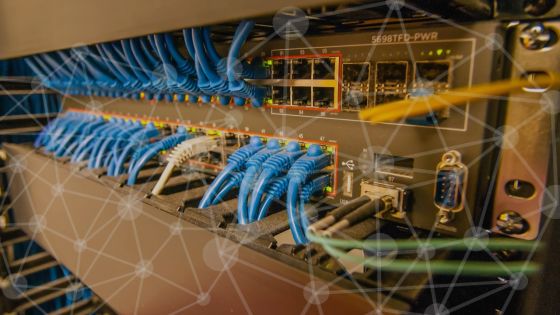
It’s possibly the best time to become an ISP in India within the non-metro regions!
India now has 600 million Internet users. With 1.3 billion as it’s population, 60% of India is still offline!
India still has a tremendous scope for growth in the rural telecom industry.
For the first time, rural India has more number of Internet users than the cities. At Muft Internet, we have been investing in rural telecom development to provide internet for rural areas in India since the last 5 years!
Unlike big telco players like Jio and Airtel, we never based our services in the cities. No point in competing if millions of villages are still offline. Instead, our investments have always been rural India.
The economic shutdown caused de-urbanisation. Millions were forced back to their villages. And now, those folks are going online and teaching people around them how to use the internet. Businesses around the world started moving online.
People consumed more video (via internet) than TV. This made our business grow – more and more people want to become an ISP in India.The global economic shutdown game changed the way our economy works.
Welcome to the biggest boom in rural telco. The fastest growing industry in India for the next decade.
After the economic shutdown, for the first time in India, there are more Internet users in rural areas than in big metro cities. Unfortunately, rural India still lacks sufficient infrastructure for broadband internet distribution.
With high costs of infrastructure set up, wireless technologies seem to pave the way for people to easily become an ISP in India and set up an ISP franchise in India. The growing demand is now being met with decentralised ISPs that use the power of last mile air fibre technologies.
The oil industry of the 21st century is ‘telecommunications and broadband’. Globally, demand for data is increasing every year. With the introduction of mobile video, more and more data is being consumed through the internet.
At Muft Internet, we have assisted over 1200 local operators in villages/towns across rural India with:
- Learn how to become an ISP
- Setting up your own wireless broadband ISP (or get an ISP Franchise) in their own neighbourhood/town/village
- Using existing infrastructure for cable operators to also give broadband internet.
- Providing reliable solutions to buy wholesale internet bandwidthin bulk for distribution.
- Consultancy/guidance to apply for ISP license from the Department of Telecom.
- Technical routing and networking support for small-medium ISPs.
ALSO, YOU CAN READ OUR NEW UPDATES
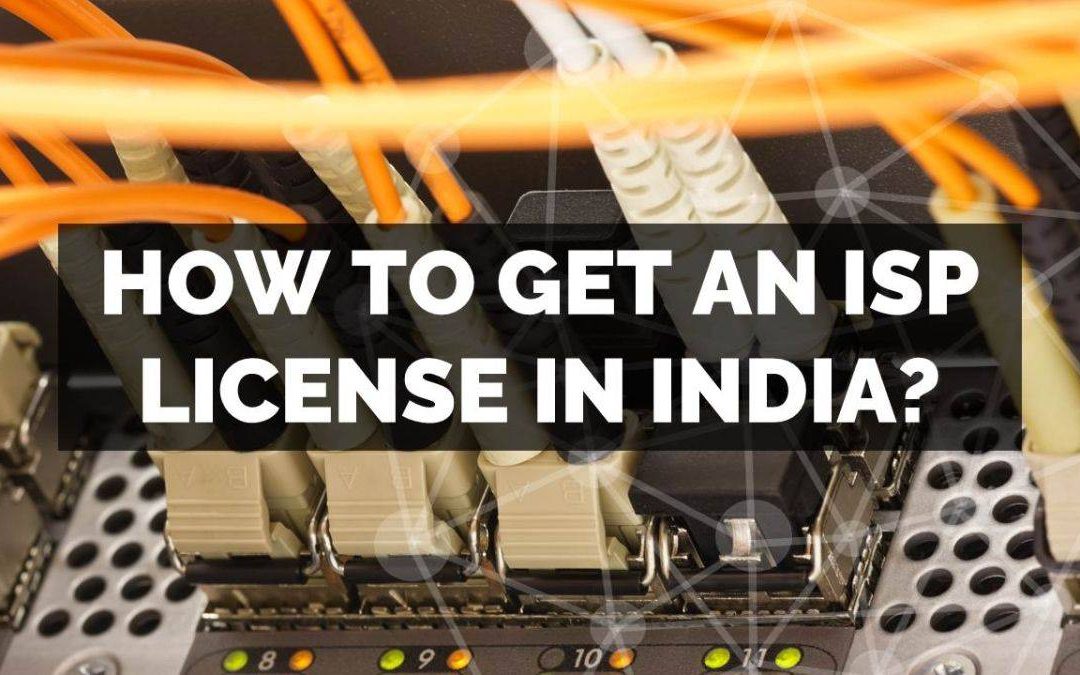
by Jinesh Parekh | Dec 19, 2016 | ISP License |
In this article we explain how to (apply for &) get an ISP license in India?
The Government of India has come up with one license for all telecom related services, known as a Unified License. Under unified license, the license holder can apply for ISP license for different areas. One must acquire a Unified License under which he will obtain Authorization for providing ISP services for a certain area such as providing internet for rural areas in India. Hence, it must be understood that there is no separate ISP license as such. Instead, one must obtain ISP Authorization under the Unified License.
One company can hold only one Unified License, but can apply for multiple ISP authorizations of different areas. However, the tenure of such authorizations will run concurrently with the tenure of the Unified License, which means that all authorizations will be valid only till the validity of the unified license.
One company can hold only one Unified License, but can apply for multiple ISP authorizations of different areas. However, the tenure of such authorizations will run concurrently with the tenure of the Unified License, which means that all authorizations will be valid only till the validity of the unified license.
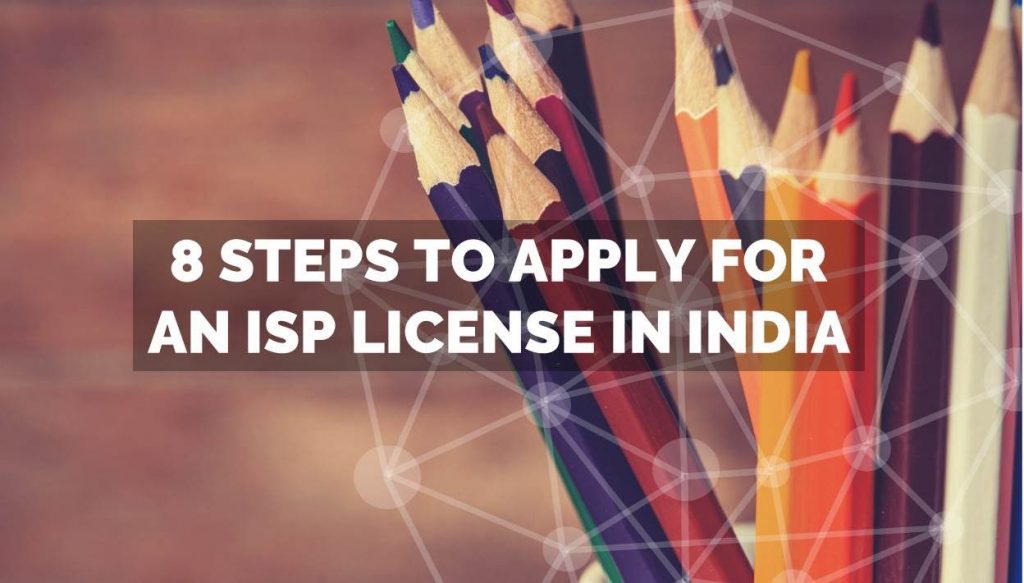
Step 1: How to (apply for &) get an ISP license in India? – Check Eligibility
To obtain an ISP license, you require a registered company under the Companies Act, 1956. You can log on to the Registrar of Companies’ website for more information on how to register a company if you haven’t already registered yours.
Step 2: How to (apply for &) get an ISP license in India? – Choose a suitable ISP license category to apply under
The next step to obtaining an ISP license is to know / decide which category of license you require – category A, B or C. Click here to know more about how to select the right category for your ISP License.
In India, there are 3 different categories of licenses to become an internet service provider, depending upon the City/State/Town/District/Village you want to start your ISP business in.
The 3 categories of ISP licenses are:
- Class A (National Area)
- Class B (Telecom Circle/Metro Area)
- Class C (Secondary Switching Area)
Naturally, a Class A ISP license would be quite expensive, followed by Class B & C respectively.
Step 3: How to (apply for &) get an ISP license in India? – Budgeting and Costing
To promote internet access in smaller towns, cities & villages, the Government of India has made a conscious effort to ease prices of a Class C license compared to a Class A or B license.
The following table will explain the financial entry conditions you require to fulfill in order to obtain a Class A/B/C ISP license:
| Service | Minimum Equity | Minimum Net worth | Entry Fee (Rs.) | Performance BG (Rs.) | Financial BG (Rs.) | Application Processing Fee (Rs.) | Total Capital Required (Rs.) |
| ISP “A” (National Area) | Nil | Nil | 30 Lakh | 40 Lakh | 2 Lakh | 50 Thousand | 72,50,000 |
| ISP “B” (Telecom circle/Metro Area) | Nil | Nil | 2 Lakh | 2 Lakh | 20 Thousand | 15 Thousand |
4,35,000 |
| ISP “C” (SSA) | Nil | Nil | 20 Thousand | 10 Thousand | 2 Thousand | 10 Thousand | 42,000 |
As you can see above, the total capital required for a Class C license is INR 42,000/- whereas for a Class A license is as high as 72.5 Lakh.
Thus, in order to become a Class C ISP licence holder, you don’t require more than Rs. 1 lakh, depending on the lawyer / ISP consultant fees.
Once you have selected the category of the ISP license you want to obtain as per your ISP business plan in India, it is important to know how the entire application process goes.
Now, let’s take you through on how to apply for an ISP license & the documents, legal help, etc. you will require.
Step 4: How to (apply for &) get an ISP license in India? – Initial Application Process
- After you have chosen your ISP license category, you will need to fill out an application form.
- Along with the form, a non-refundable Processing Fee of INR 15,000/- must be paid by the applicant, along with 2 copies of the application form, by DD/Pay Order from a Schedule Bank payable at New Delhi issued in the name of Pay & Accounts Officer (Headquarter) DOT.
- Provide all required official documents. Click here to know the list of documents required.
Step 5: How to (apply for &) get an ISP license in India? – Document Review
Once you have submitted your application form along with the required documents & fees, the Department of Telecom will review your application & respond to you, the applicant, in under 60 days, as far as practicable i.e. in case there are any issues with your application, there may be a delay in the issuing of a response from the DOT.
If there is no problem with your complete application, the DOT will issue a ‘Letter of Intent’ in your favor.
However, there are chances that your application may be rejected or delayed due to non-compliance with legal, security, hardware, commercial and contractual compliance and human errors such as incomplete form submission.
Therefore, it is important to get an ISP consultant / lawyer to review your application before you submit your application form for obtaining the ISP authorization under the Unified License . Click here to know more.
Step 6: How to (apply for &) get an ISP license in India? – Letter of Intent
If there are no issues with your application form for obtaining the ISP authorization under the Unified License, the DOT will issue a ‘Letter of Intent’ in your favor. Once the Letter of Intent is issued,
- You will have to submit the one-time entry fee (as mentioned in the table above) along with the required bank guarantees.
- Furthermore, you will have to submit a signed license agreement with the DOT and any other documents required, including the documents mentioned in the Letter of Intent.
- Do note that the one-time entry fee is non-refundable & once the Letter of intent is issued, all the above requirements have to be fulfilled within a specific period that will be mentioned in the Letter of Intent.
Step 7: How to (apply for &) get an ISP license in India? – Confirmation
If everything goes smoothly, you will be issued an ISP authorization under the Unified License for a period of 20 years. The DOT will contact you / mail you directly to inform you whether you have been issued the ISP License.
Step 8: How to (apply for &) get an ISP license in India? Conclusion – Need for Expertise: Get/Apply an ISP license in India
The process of ISP licensing is technical and lengthy for a common person to comprehend. There have been quite a few instances where the application is rejected because of an incomplete submission, missing information, non-compliance, missing documents etc. Thus, it is advisable to get your documents & forms reviewed by a professional ISP consultant or lawyer to make sure you don’t lose out on time & money.
Click here to know more about our ISP consultancy.
Disclaimer: the rules keep changing as per notifications by DOT and Govt. This information was published on Oct’2016. Do not treat this as professional advice, kindly contact us for up-to-date compliance and to avail professional assistance for your application.
Need an ISP consultant to help you with your ISP License Application?
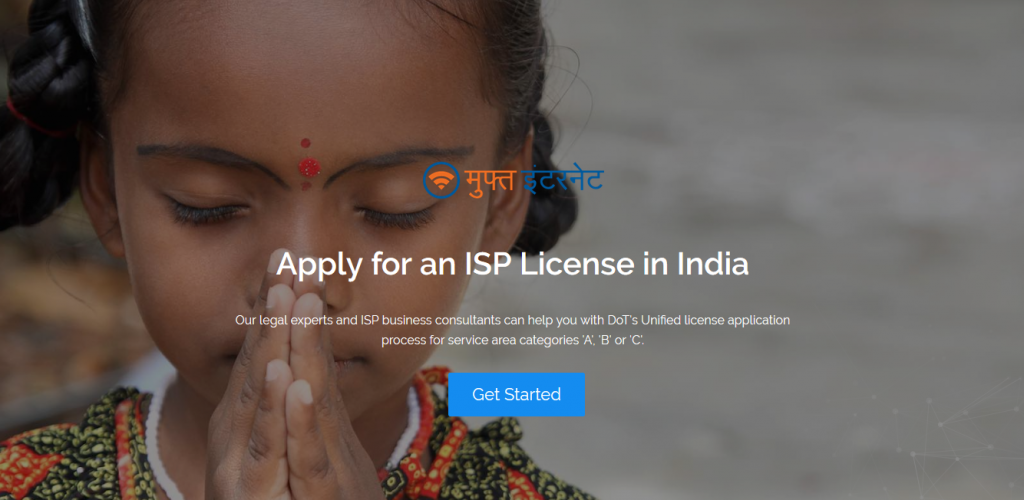
ALSO, YOU CAN READ OUR NEW UPDATES
